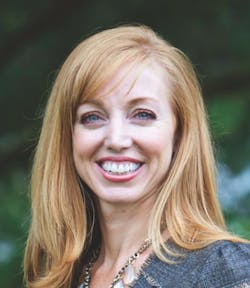Under-40 Home Builders: Developing a Brand
The inception of John F. Buchan Homes LLC in 2009 was just a couple of years after Heather Dosch started winding down her father’s production home building business, John F. Buchan Construction Inc., which was founded in 1961. Heather and her husband/co-owner Kevin Dosch have since carved out their niche in metro Seattle by focusing on custom-built homes, as well as delving into multifamily, spec houses, and remodeling. Her company closes 25 to 30 homes a year.
Q: How is the business model of John F. Buchan Homes LLC different from your father’s company?
A: There’s a bigger emphasis on custom homes. I always thought we were a custom home builder that tried to be a production builder. It was high volume—we were doing 110 to 120 houses a year—and a lot of times competing against ourselves as every house was different from the other. I kind of thought what we were doing was insanity. We’re better set up to be operating on a much smaller scale. My dad was really big on growing and being the biggest builder around, and that wasn’t really what I wanted. I wanted something that was more of a relationship with the client, and you can’t really have that when you’re doing 120 houses a year. Plus, having gone through the market downturn, I didn’t really want to be out there on land development deals that take 10 years to come to fruition and all that time you’re trying to find capital. It had a lot to do with our comfort level as well as what I thought our product was most aligned with.
Q: What prompted you to build spec homes?
A: It was not our original intent to do it, but we were looking at these deals at the end of 2009, 2010. You had a lot of distressed properties, so there were some really great opportunities, and I felt the market would turn in the not-too-distant future. So basically it was a matter of following the money. We had lenders who were eager to lend to us, so it just made sense to do it. And we were still growing the company, so while I was in charge of winding my parents’ company down and building our new company up, this allowed us to kind of even out the imbalance between the two. When we started getting into this just-custom realm, we didn’t have any models for people to look at. So having the communities and a model home when we were doing spec home stuff allowed us the opportunity to have something to show people.
Q: Tell us about your foray into multifamily?
A: I’m a licensed broker and when I first got my real estate license, I sold multifamily. So personally I had some background, and I love (Seattle). When my husband and I were first married, we lived right in the urban core. We’re not doing huge multifamily because you’re too much of a target for litigation, and it’s a much more involved deal for finance and insurance. I wanted to deal with the boutique stuff. The east side of our market has been branded with the traditional, European, and to some degree French chateau-style houses. We have done much more, but that is just not what we’re known for. Also we really wanted to tighten the loop and build more toward the city. Our market is very different from other parts of the country where it is very micro-pocket driven. Even though getting into downtown Seattle takes only 10 minutes, we don’t have brand recognition there because we’ve done so much historically in the suburbs. Multi allows us to get a little more brand recognition in the urban areas. I’m always considering moves that support, tie, and feed more leads into my custom-home realm. We thought a strong brand in Seattle would generate more custom jobs. Also the profit margin that we create for these projects outperform any of the spec stuff that we do by about 5 percent. The properties were not vacant pieces of dirt; they each had a rental unit or multiple rental units on them so that allowed us to take time with design, see where the market was going, and still have income to pay for the loans. PB
